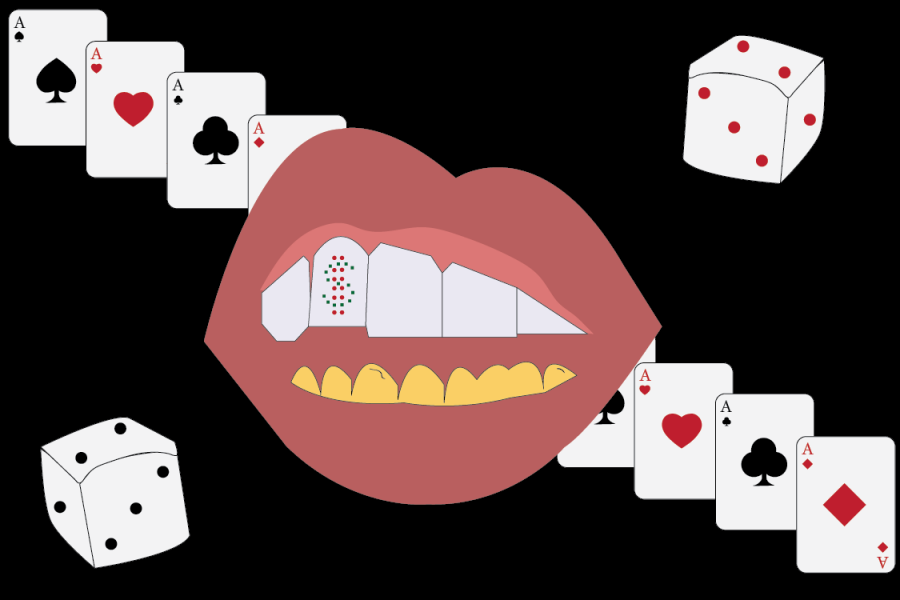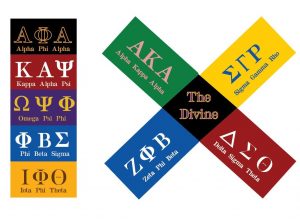OPINION: Gold, grillz and games: the bond of Black culture
Black culture is multifaceted through colors, music, fashion, and food which makes each individual unique. Today’s prevalence of cultural appropriation has made the struggle to remain unique and versatile even harder for people of color.
April 27, 2021
The trends that come and go in fashion vary from different parts of the world, varying minds, and varying eras that predispose them to creativity.
What was relevant then seems to always find its way back to popularity in the near future.
What seemed odd to many seems has become second nature to all.
Black culture is not condensed or diminished to styles and aesthetics but the presence of Black originality paved the way for many white designers who got their claim to fame while the Black creators awaited in the shadows.
From braided styles, protective styling, thick acrylic nail design, to gold, sneakers, and even hip hop music were popularized by Black men and women.
Styles so unique that they were taken to front page magazines and album covers by white conspirators.
This originality becomes copycatted and replicated for the sake of staying relevant however, to smaller brands one stolen concept could result in a companies closure due to the transition of sales.
Black creators being mugged or down right copied by larger, more renowned white brands that can break these smaller, Black owned entrepreneurs with a simple lawsuit.
The reign of power and money make it difficult for Black people to get the opportunity to have control over their own creativity in the eyes of competition.
From brands such as Fashion Nova, Zara, Forever21, H&M, Guess, Calvin Klein, and Gucci.
When do we draw the line from what seems culturally copyrighted?
There are many things to consider: appreciation v. appropriation and understanding it’s history and how your actions impact the success of that creator or founding cultural group. The conversation of appreciation and cultural appropriation often is discussed with hair, skin tans and even makeup trends, but this conversation is much larger than its material examples. Cultural appropriation can be broken down as taking pieces or elements of cultural groups. Often this taken as negative due to how the tactic disenfranchised marginalized groups or the founding cultural group. As a way to combat this collective sharing of creativity, people have made bigger strides to culturally appreciate these groups. The outward acknowledgement of the element as homage, choosing not to directly copy prints or designs, understanding the cultural importance of the element, leaving sacred traditions alone, admitting to ignorance rather than trying to justify these decisions and supporting the business of the founding culture have become ways to satisfy this disdain with the public.
In addition to understanding cultural appropriation and appreciation, people must do their research to understand these traditions. From understanding where this element became popular, who made it popular and the correct way to use the element and making the final decision to either move forward or leave it alone, demonstrates cultural respect and empathy. Unfortunately, in many cases these steps are skipped or misinterpreted. Social media users and influencers are targeted and trolled into apology videos or official statements to gain the public’s trust back. For some figures, this is an easy fix while others have their career fall down the drain.
Lastly, a notion to consider is how your actions to use this element impact the cultural group.
Businesses that sell these elements owned by that cultural group should be supported. For example, Black Lives Matter merchandise should be purchased at a Black owned establishment. Contributions to help smaller businesses allow communities to build their own homes to be places of prosperity and success. The support of these businesses shows the extension of potential allyship and attempts to learn more about the culture.
Without these steps, cherry-picking elements becomes an act of cultural theft that communities will exhaust due to the pain and oppression they’ve experienced for being unique.
Frustration from communities of color often stem from the fact that they have been forced to assimilate to white European standards with religion, food, dress, language and everyday normalities. To see brands capitalize on braided styles, beads, 360 frontal wigs and even overlined lips that were often viewed as ‘distasteful’ are now trendy.
“It’s more than annoying to see white women with box braids and white men with dreads because these are the same styles that keep Black men and women out of jobs. It’s not far that people get to pick and choose when I can be accepted as a Black person,” said Louisville Male High School student Leah Marshall.
“We [Black people] can’t ever have anything.White people could watch you make the shirt then add their own logo and double the price to destroy you as a creator. They [white people] have everything but, always looking to see what we got,” said Pleasure Ridge Park High School student De’Sean Cain.
Other students from local public schools repeat similar grievances as Marshall and Cain. Cultural appropriation is bigger than a trend on social media but, it’s the blatant reminder of who holds power.
The pressures to achieve acceptance from the white gaze leaves the Black community with few things that are culturally trademarked.
First is gold. Gold has been symbolic to many cultures around the world to demonstrate wealth, prestige and sense of rarity as early as King Tut or Tutukahmen. However, gold became easily manipulated and easily attained as a method of payment, a material to make furnishing pieces with, even dishes.
As years progressed, people came into more lucrative professions and the supply of gold became more plentiful, it’s value dropped to an all time low of about $1,575.
The affordability of gold made the element an even better example to manipulate to present the same ideas as it did back in the days of King Tut.
This proof of wealth no longer needed to be a bank statement or even purchase of land, but owning gold allowed the opportunity to negotiate. Families of color began to pass down gold jewelry and even purchase gold jewelry due to this opportunity.
“For a long time, the jewelry my dad bought [my siblings and I] was gold because if we ever got in a pinch when we got older, those rings were worth a couple hundred dollars. The gold was more valuable than just Claire’s hops or Justice bangles,” said University of Louisville student Karleigh Dennison.
“Every Black grandma has some fine china with a little gold that they keep because of its value. Good china that seems irreplaceable,” said Pleasure Ridge Park High School student Breanna Jeffers.
The pliability of gold and popularity of gold was often copied or replicated to be fake shines, lustered paint, or a coating rather than solid gold.
But, during the 80’s to the present, fake gold only mattered to the man at the pawn shop. Earrings, rings, necklaces and bracelets either gold or coated in gold became the aesthetic in urban Black culture.
Rappers began to get gold teeth covers in varying styles known as grillz. Grillz signified popularity, money and potentially fame.
Grillz range in price from $200 to several hundred thousands of dollars as gemstones and diamonds can be added. To many teenage youth and even adults in lower class predominantly Black neighborhoods, grillz became as essential to many today as airpods or an apple watch. However, grillz did hold negative connotations as ‘unprofessional’, ‘gangster’ or related to ‘gang related activity’ due to the association with rappers and the collective fear Black communities.
“Grillz are just a Black thing. All family pictures have at least two people with partial fronts or a gold tooth. It adds like some spice everytime someone speaks and smiles. Lowkey like vibe check,” Marshall said.
“It’s cool to see women with grillz. Grillz kind of tell their own story but, not everybody is meant to hear that story. Some people think grillz mean someone’s hood is rich but, sometimes it’s just for fun. No white employer is [going] to see it that way though,” Jeffers said.
Finally, another staple that seemed to linger beyond ancestral timelines is the presence of street games in Black households. Families gathered to play spades, tonk, speed, rummy, solitaire and dominoes. Others such as neighbors and just strangers on the sidewalk rolled dice for money, shoes, chains, bets, you name it. Games gathered people as a collective to think and strategize with low stakes or danger while, in some cases those circumstances may be the opposite. An opportunity to think strictly about the game rather than the external factors when a person walks outside their door. The player and opponents are not thinking about the fears of police, experiences with mental health struggles, divorces, losses of family, etc. The name of the game strictly became win.
“During Christmas and Thanksgiving all the uncles and aunts just meet at the table to play spades. In my family, you can’t learn until ‘you make enough money to pay rent’ because they play for nickels, quarters, sometimes even dollars for a night of laughing and calling somebody out for cheating. Spades is just funny to watch. You just got to be there,” Cain said.
“Playing cards is just that thing my family does after eating a big dinner. Everyone wants to win something. Candy or money, it doesn’t matter for real. Everyone just joins in, the neighbors may come down or friends from out of town. Playing cards will have everyone stuck to their hand until the morning,” Dennison said.
Gold, grillz and games are the tiniest fluff on the dandelions of Black culture that are trying not to be blown away by white curiosity. Yes, many non-Black people play these games. Yes, many non-Black people wear grillz and even own gold. If that’s where your mind is, you’ve missed the point. These things are not “only for Black people” but, it’s a sense of ownership that the community has after being owned for so long. The severed connection between ancestors and tribes makes Black identity hard to decipher as the Black experience is many struggles within its own. Families of color can’t just look up last names, find old letters, learn about ancestral estate or even tradition because many Black Americans don’t have a story to start with. Black Americans have had to create their own narratives due to this loss of cultural connection, so each ‘little’ tidbit such as gold, grillz and games are part of the fundamental structure of this search for identity and connection to roots for some Black Americans.
A connection that allows the oppressed to reclaim their own individuality that was once stripped down to a cattle branding, the name ‘boy’ or ‘girl’ rather than ‘mister’ or ‘miss’, or even an inmate number.
An opportunity to be innovative and creative without rigorous laws or never ending obstacles to share vibes rather than expectations. To some aspects such as braids, grills or even long acrylics are surface level but, it’s detrimental to people that have not always had everything. Transitioning to once being owned to being able to own their paths, from being forced to being able to choose, is much deeper than surface level.
The poking and prodding from white counterparts as they take these aspects of individuality, rebrand for runway sets or even capitalize through social media through the efforts by Black people, feels like history repeating itself all over again.
The words you just read are an outcry from Black students who have not always had the privilege of opportunity or even the privilege of privilege. An outcry to let us have something for our own or even give credit when credit is due. Credit that has been neglected in our past and present. It feels easier to extract the qualities that make Black culture seem ‘trendy’ or ‘edgy’ rather than actually having the experience of being Black in this world. An experience that could turn life into death in any interaction with police, authorities and ‘Karens.’ This outcry is bigger than trends and twitter rants; it’s a dialogue about the reclamation of self and one’s culture.











B • Nov 24, 2022 at 11:38 pm
Didnt know I was supposed to be black to wear my 3 troy ounce gold chain and my gold amd diamond watch. Been wearing gold since I was 11 it’s not a black thing. Gold is sophisticated if you dont over do it ie. The big stupid medallions and crap on the chain. But sorry gold chains and jewlery not a black thing